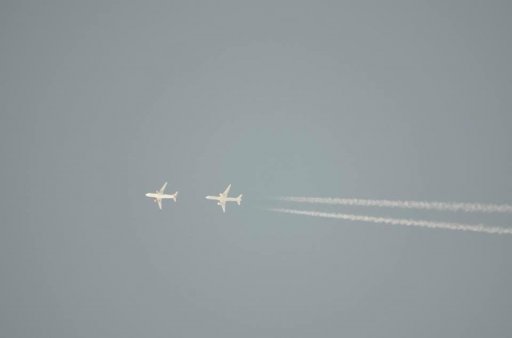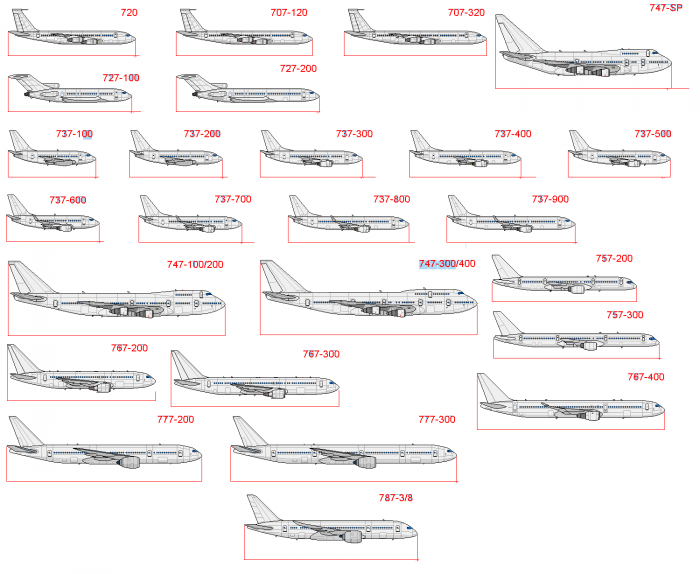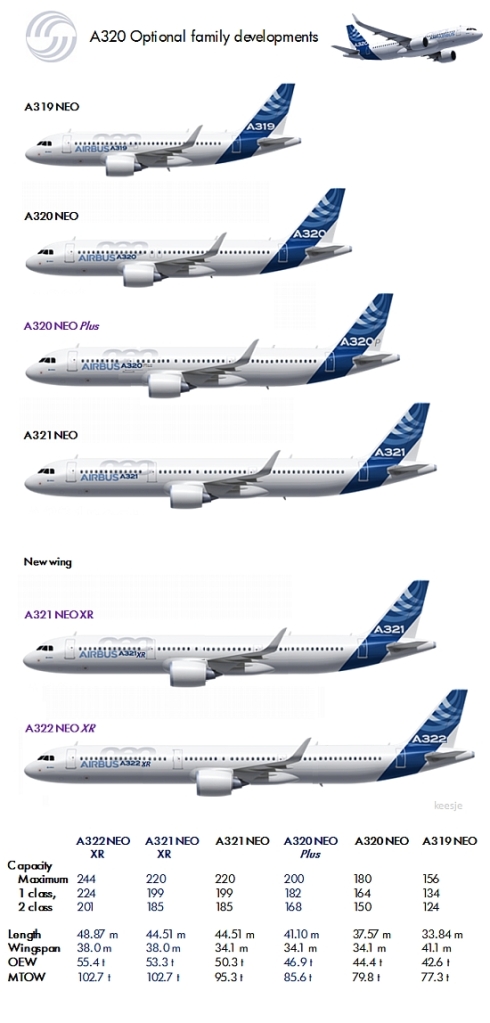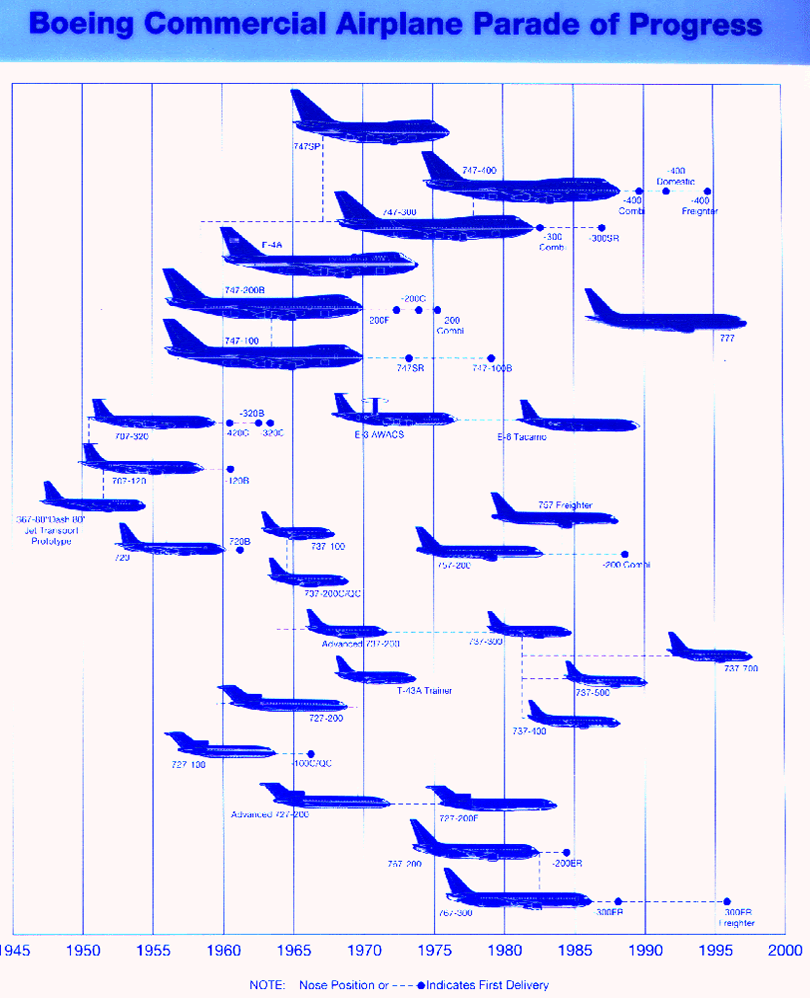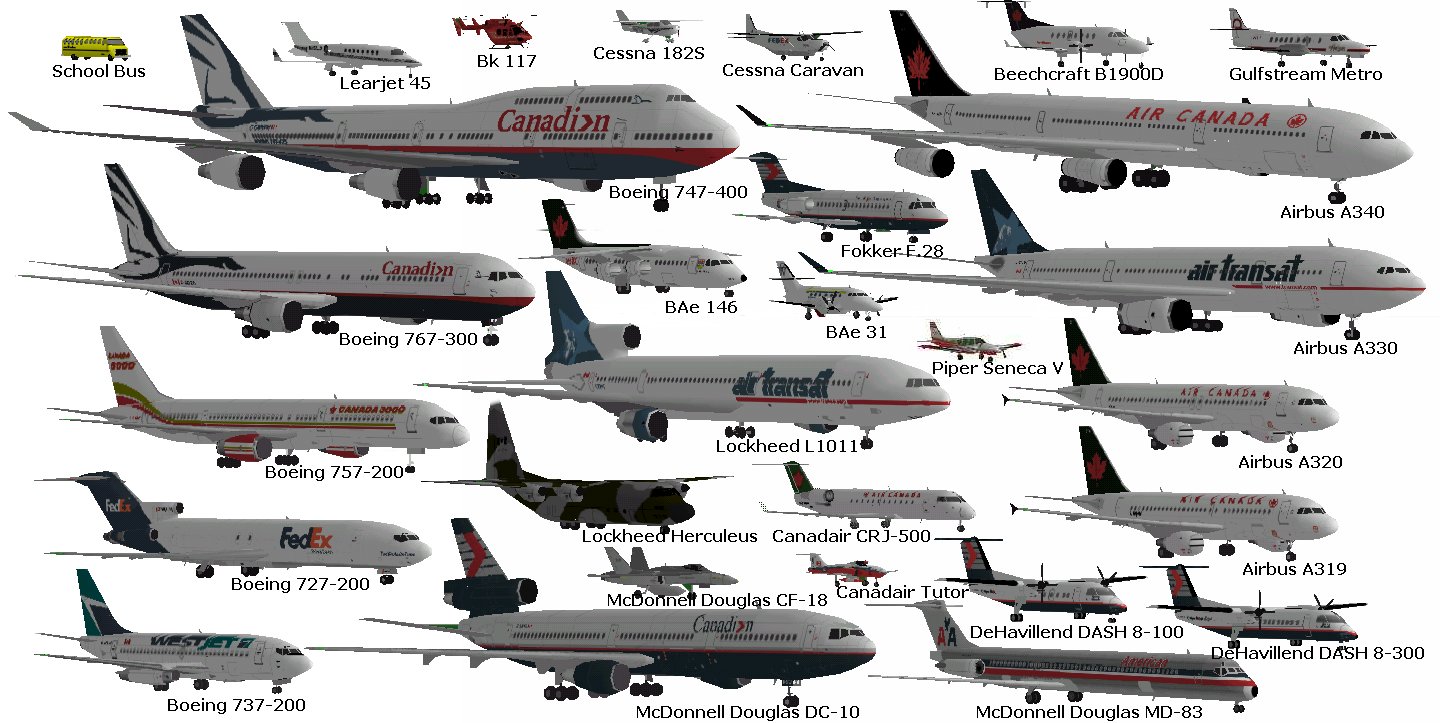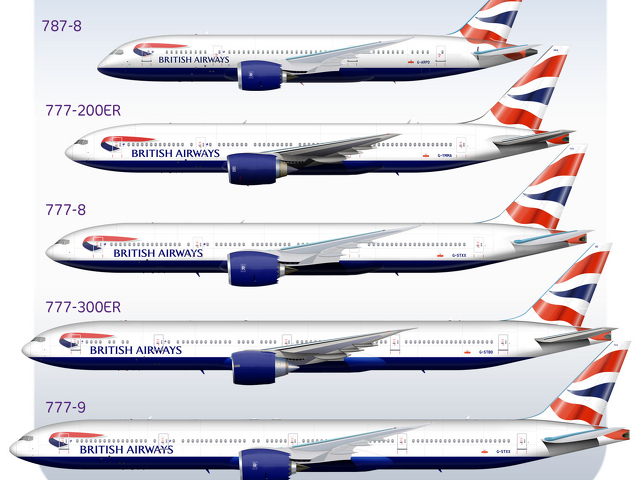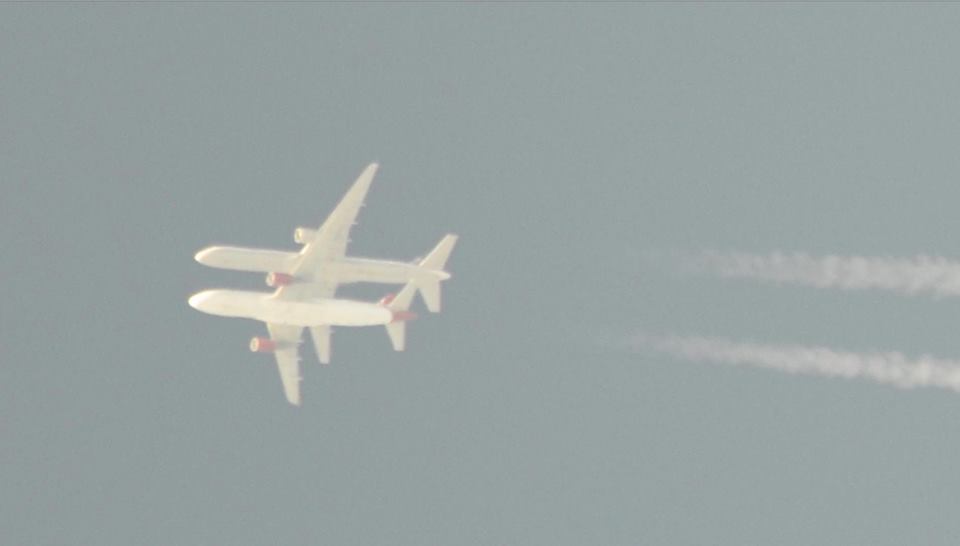Which of these two planes is higher? And where are they exactly, relative to each other?
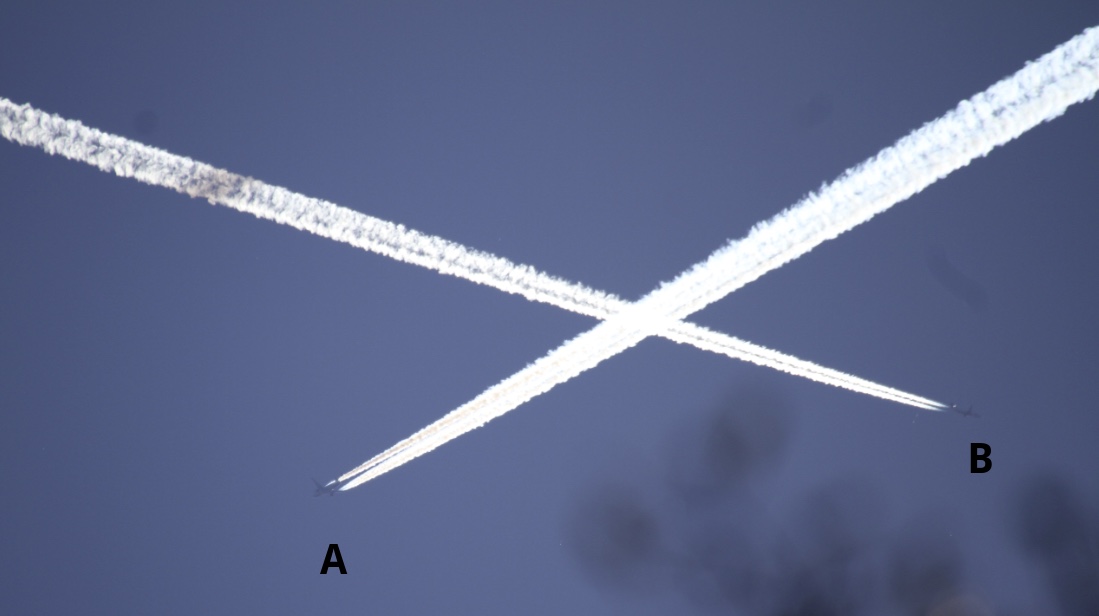
Now your first impression might be that it's fairly obviously plane B, on the right. It's visibly smaller than the left plane, so must be farther away, and its contrail is obscured by plane A the left plane's contrail, so that means the left plane is closer, right?
Wrong. The right plane is actually the one that is closer. It's actually less than half the distance away, and 4,000 feet lower.
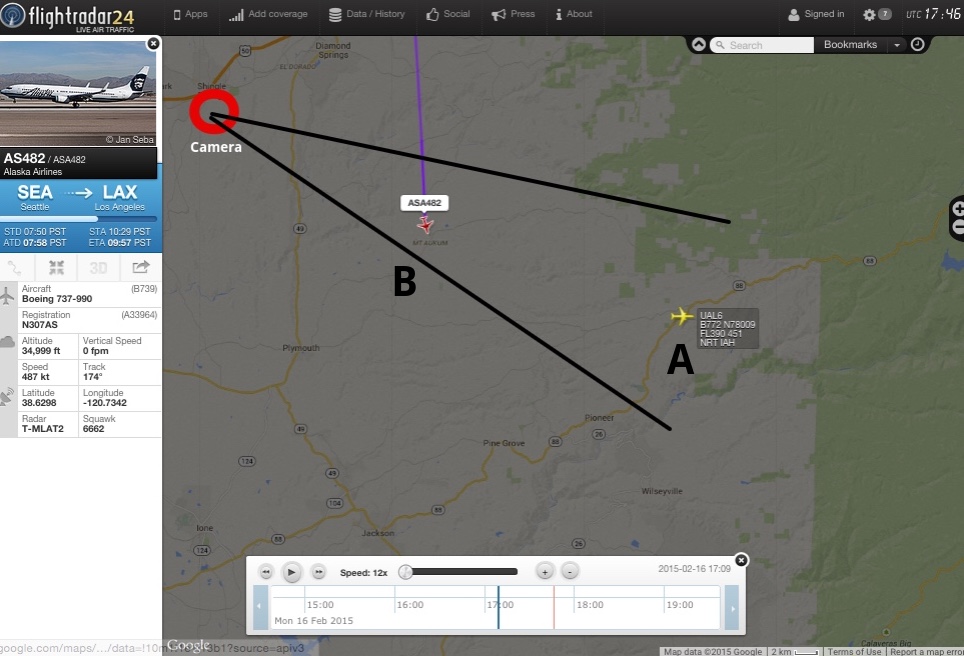
The key here is that the aircraft are very different in size. The plane on the left , United Flight 6, is a 777-224(ER) length 209 feet, whereas the plane on the right, Alaska 682, is a 737-990, length 138 feet, or just 66% the length of the 777.
There's a variety of illusions here. For one, even though the plane on the right looks smaller, it's actually visually longer in this photo.
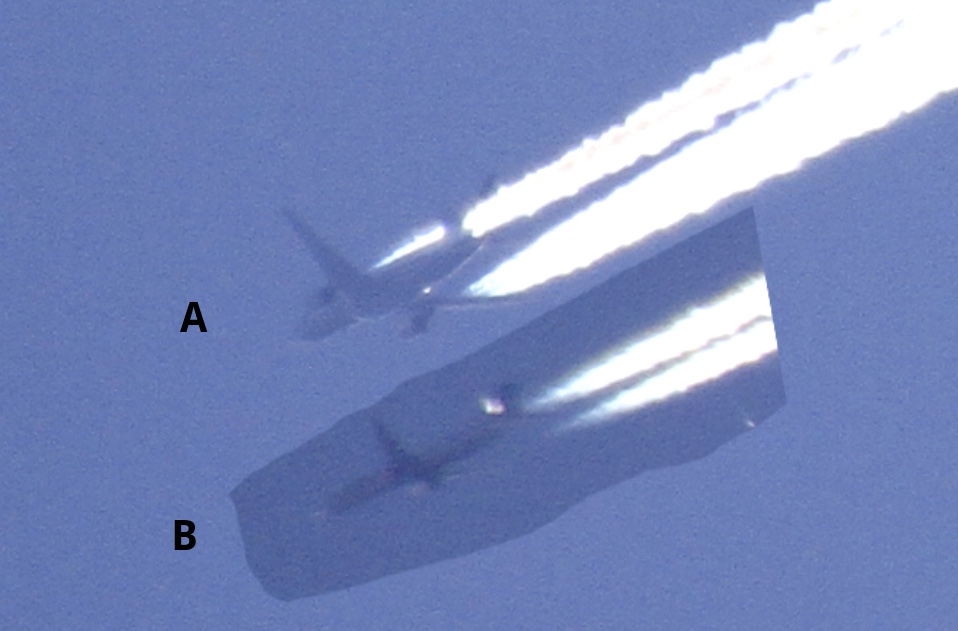
This matches the position and relative sizes. The right plane is the 737, 2/3 the length, but half the distance, so actually 4/3 the visual length. It looks smaller in the wider shot because the angle of the wings is more straight on, and it has a narrower body.
Another clue here's the patch of shadow on plane B's contrail.
https://www.metabunk.org/sk/20150216-152137-j8rn2.jpg
There are no other contrails or clouds in the area, so the only thing that can be leaving this shadow is plane A's contrail, so it has to be above plane B.
So why does Plane A's contrail look like it's obscuring plane B's contrail where they visually cross? That's another illusion. White contrails consist only of white light, they are not blocking any light. By our brains interpret the darker regions of the contrail as something that is blocking the light, when really it's just a hole that you can see the sky through. So it does not matter which contrail is above or below, the result is the same. This is explained in more detail here:
https://www.metabunk.org/threads/ab...ontrail-is-above-or-below-a-cloud-layer.4334/
Still not convinced? Have a look at this photo from a few seconds earlier:
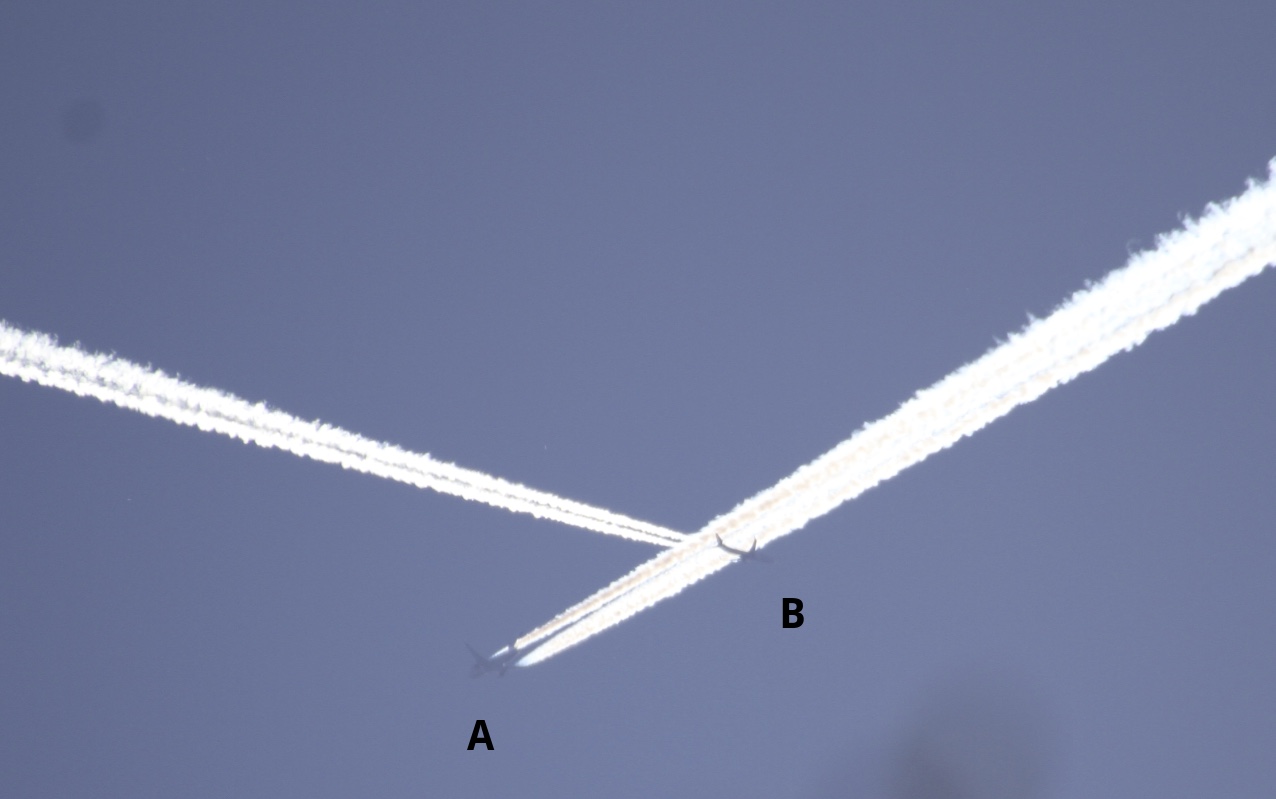
Here plane B is clearly underneath plane A's contrail, even though its contrail seems to be above, proving the optical illusion.
The full set of images can be found here:
https://www.flickr.com/photos/metabunk/sets/72157648533061393/
And the Google Earth tracks of both planes are attached, which demonstrate the crossing angle in quite nicely:
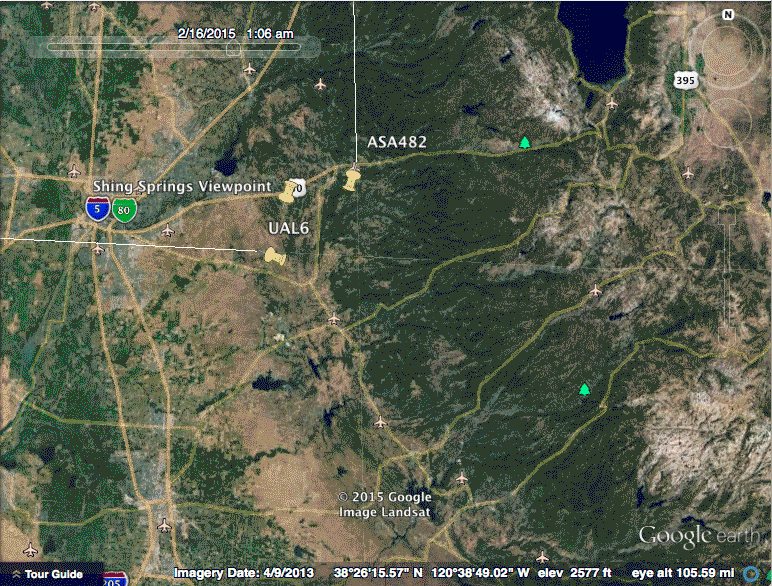
A final illusion here is that the planes both appear (to some people) to be in quite steep descents. But in reality that's just perspective. The planes are both flying perfectly horizontal. The viewpoint is very close to the intersection, so the camera is looking up at it, which gives the apparent angles.
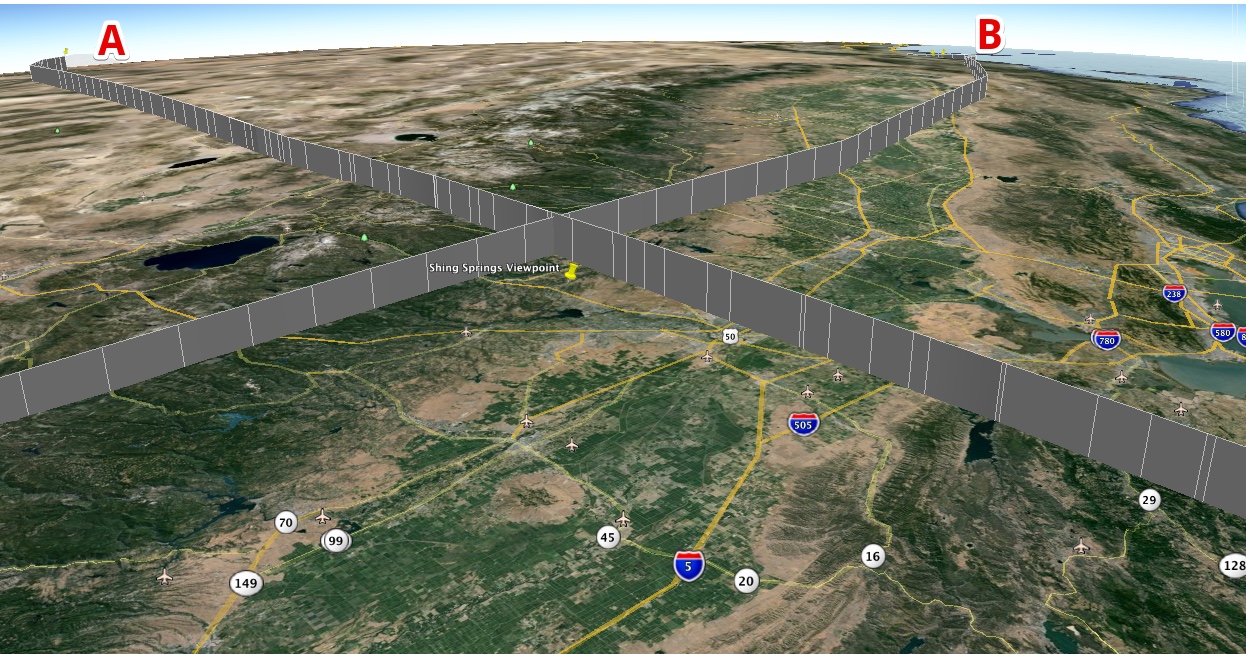

Now your first impression might be that it's fairly obviously plane B, on the right. It's visibly smaller than the left plane, so must be farther away, and its contrail is obscured by plane A the left plane's contrail, so that means the left plane is closer, right?
Wrong. The right plane is actually the one that is closer. It's actually less than half the distance away, and 4,000 feet lower.

The key here is that the aircraft are very different in size. The plane on the left , United Flight 6, is a 777-224(ER) length 209 feet, whereas the plane on the right, Alaska 682, is a 737-990, length 138 feet, or just 66% the length of the 777.
There's a variety of illusions here. For one, even though the plane on the right looks smaller, it's actually visually longer in this photo.

This matches the position and relative sizes. The right plane is the 737, 2/3 the length, but half the distance, so actually 4/3 the visual length. It looks smaller in the wider shot because the angle of the wings is more straight on, and it has a narrower body.
Another clue here's the patch of shadow on plane B's contrail.
https://www.metabunk.org/sk/20150216-152137-j8rn2.jpg
There are no other contrails or clouds in the area, so the only thing that can be leaving this shadow is plane A's contrail, so it has to be above plane B.
So why does Plane A's contrail look like it's obscuring plane B's contrail where they visually cross? That's another illusion. White contrails consist only of white light, they are not blocking any light. By our brains interpret the darker regions of the contrail as something that is blocking the light, when really it's just a hole that you can see the sky through. So it does not matter which contrail is above or below, the result is the same. This is explained in more detail here:
https://www.metabunk.org/threads/ab...ontrail-is-above-or-below-a-cloud-layer.4334/
Still not convinced? Have a look at this photo from a few seconds earlier:

Here plane B is clearly underneath plane A's contrail, even though its contrail seems to be above, proving the optical illusion.
The full set of images can be found here:
https://www.flickr.com/photos/metabunk/sets/72157648533061393/
And the Google Earth tracks of both planes are attached, which demonstrate the crossing angle in quite nicely:

A final illusion here is that the planes both appear (to some people) to be in quite steep descents. But in reality that's just perspective. The planes are both flying perfectly horizontal. The viewpoint is very close to the intersection, so the camera is looking up at it, which gives the apparent angles.

Attachments
Last edited:

